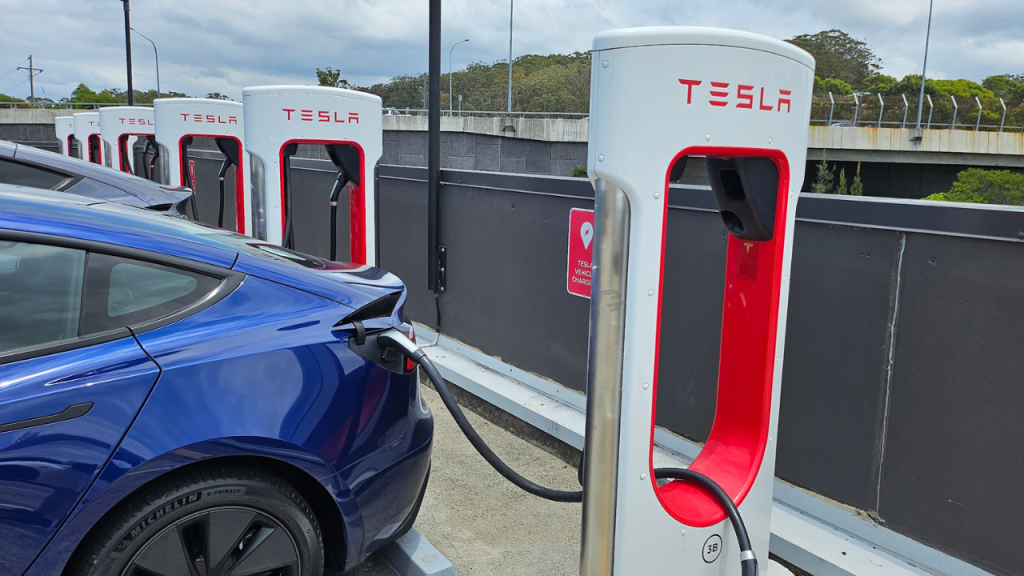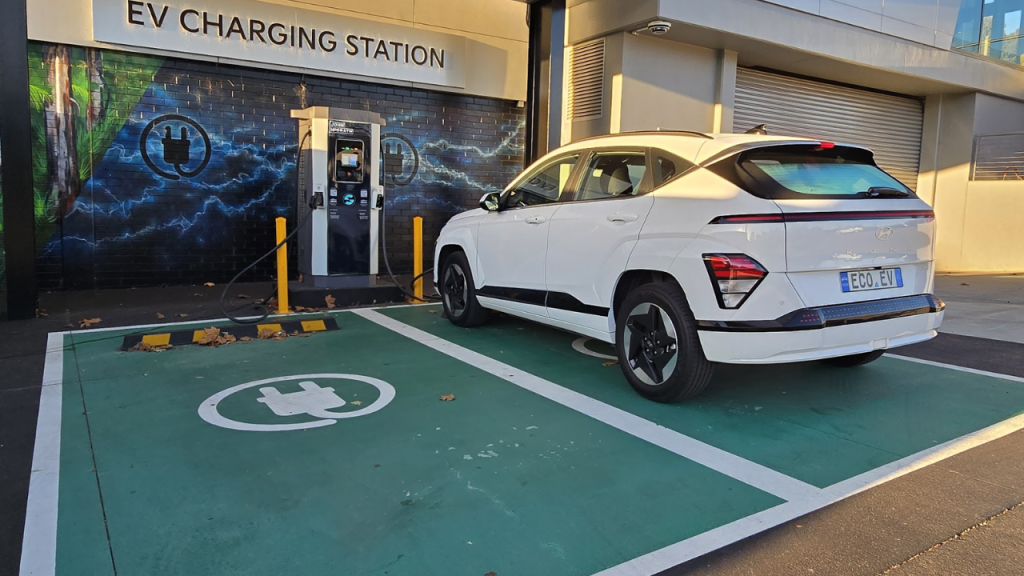We hear a lot about range anxiety when it comes to EVs in Australia, with many prospective electric car owners worried about just how far their cars can travel on a full battery, but something that’s discussed less is charging speed, and how long you’ll be sticking around a charger before you can be on your way.
It’s a topic that we can demystify quite easily, but if you’re looking into buying an electric car, and thinking of being quite reliant on public charging (say if you rely on street parking and can’t charge at home, or if you go on a lot of road trips) I highly recommend being across charging speeds. Knowing what to expect from an electric car at a public charger will cut down on frustration and get you on the go quicker.
We’ll answer all your questions here – but to begin with, what’s the fastest-charging electric car in Australia?
What is the fastest charging EV in Australia?
The fastest charging EV in Australia, at the time of writing, is the newly-released (still being rolled out) Lotus Eletre, which can charge at a maximum DC capacity of 355kW per hour, which is about enough to give the car a charge of between 10 per cent and 80 per cent in just 20 minutes on a DC charger.
That is contingent on a few factors, however. To reach that maximum capacity, the Eletre would need to be charging on a sufficiently capable public DC charger, of which there aren’t many in Australia (the most powerful chargers in Australia cap out at about 350kW, though many max out at 150kW per hour, and you’ll also see 50kW and 75kW here and there).
Such speeds would not be possible with a home charger, which would be reliant on ‘AC’ charging, which is a separate thing altogether. Charging capacity and speeds tapers off as the battery increases in charge as well, which means that the charger will slow down the longer you use it.
Up next, there are some other performance cars – the Audi E-Tron GT and the Porsche Taycan, both are capable of charging up to 270kW capacity on a DC charger. That’ll give it a charge from 10 per cent to 80 per cent in about 20 minutes.
Below these cars, speeds aren’t slow for popular models, but they don’t reach the same soaring highs:
- The Tesla Model 3 Long Range and Y Long Range can charge at a maximum DC capacity of 250kW
- Higher-end models of the Hyundai Ioniq 5, Ioniq 6, Kia EV6, and Kia EV9 can charge at a maximum of 235kW
- The MG4 can charge at a maximum of 150kW (excluding the Excite 51 version, which maxes out at 88kW).
Many cheaper (and some not-so-cheap) EVs tend to cap out at below 150kW on a DC charger. The BYD Atto 3, for example, caps out at 70kW for the standard, and 80kW for the Extended Range model. The BYD Seal maxes out at 150kW for Extended Range models and 11kW for the base model.
Even more pricey options, such as the Ford Mustang Mach-E, maxes out at 150kW.
All of this is irrespective of charging curves, which can be quite dramatic. The charging curve of the GWM Ora, for example, is exceptionally dramatic as it appears on EV Database, and in our review, we only observed it at a maximum capacity of 69kW (it’s rated to go as high as 80kW).

But what about AC charging?
The numbers above are in regard to DC charging, but all of these cars have separate speeds when charging on AC. AC chargers don’t rely on the same bulky installations that DC chargers do and are what you can expect from smaller wall-mounted chargers ideal for a garage.
The maximum AC charging capacities for any EV is 22kW, which is what the Lotus Eletre, Porsche Taycan, and all Audi E-Trons are capable of. These speeds should give you a full charge within four or five hours.
Many popular models, such as the Tesla Model 3, Model Y, Hyundai Ioniq 5, and MG4 cap out at 11kW. The BYD Atto 3 maxes out at 7kW. Expect a full charge between five and six hours with these cars.
However, please keep in mind that, just like with DC chargers, AC charging speeds are highly dependent on the charger being used. You’re not going to get these speeds if you’re using a standard home plug socket charger, which will max out at 2.4kW. You’ll need to check what the charger and charging box are capable of, and depending on which EV you’re getting, it could effect how much you spend on a garage charger.
With AC chargers, be less worried about the speed. These are naturally slower and are more intended to be used for overnight charging.

Realistically, how much time would you spend at a public charger?
Prospective EV buyers should keep in mind that even in the most ideal conditions, you can encounter hangups with public chargers. In peak hours, chargers are often subject to long queues as electric cars are funnelled through them, and in my time reviewing EVs, outages for these chargers have been common.
The shortest amount of time I usually spend at a public charger, just to chuck a quick charge in so I could be on my way, is probably about 20 minutes – with a car like the Ioniq 5 or the Tesla Model 3, which both have quite respectable DC charging speeds.
However, with a slow-charging car like the GWM Ora, I’ve been at public chargers for as much as an hour and a half – usually closer to 40 minutes, if there are no queues.
It’s stuff like this that makes it exceptionally important to read reviews and get a good idea of what you’re walking into when getting an EV. If it doesn’t suit your lifestyle, you’re probably going to be disappointed.
Image: Zachariah Kelly/Gizmodo Australia
